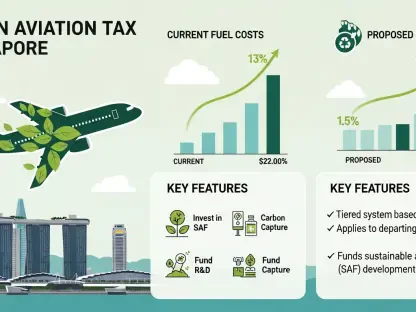In a striking display of community resolve, Hudson Valley leaders and environmental advocates are mounting fierce opposition to a federal court ruling that permits the release of treated radioactive wastewater into the Hudson River, a critical lifeline for the region. This decision, which nullified New York’s protective “Save the Hudson Act,” has granted Holtec International—the company tasked with decommissioning the Indian Point nuclear power plant—the green light to proceed with a plan that many local stakeholders deem a severe threat to public health and ecological stability. The passionate outcry, notably expressed during a recent gathering at Haverstraw Bay Park in Haverstraw, NY, underscores the profound connection residents feel to the river, which supports drinking water supplies, recreational activities, and economic vitality. As tensions rise, this environmental battle highlights a broader struggle between industrial interests and the safeguarding of a cherished natural resource that millions depend on.
Voices of Resistance in the Hudson Valley
The backlash against the federal court’s ruling has been swift and unequivocal among Hudson Valley legislators and community figures. Legislator Beth Davidson from Nyack/Clarkstown has publicly decried Holtec International’s proposal as “reckless” and a direct “insult” to the families who call the region home, reflecting the deep emotional toll this issue has taken on local residents. Her sharp criticism points to a pervasive fear that the discharge could irreparably harm the quality of life for those who rely on the Hudson River for their daily needs. This sentiment is not merely rhetoric but a call to action, as leaders rally to protect their constituents from what they see as a preventable environmental disaster. The intensity of this response reveals the high stakes involved, where the river is not just a waterway but a symbol of community identity and survival.
Echoing Davidson’s fervor, Legislator Alden Wolfe has taken a strategic stance by urging Governor Kathy Hochul to appeal the court’s decision while simultaneously pressing federal lawmakers for intervention. His plea emphasizes the urgency of shielding a watershed that serves millions across the state, highlighting the potential ripple effects of contamination on a vast scale. Wolfe’s focus on immediate action through legal and political channels demonstrates a proactive approach to countering the ruling, aiming to restore protections that were once ensured by state law. Alongside local officials like Haverstraw Supervisor Howard T. Phillips Jr. and Village Trustee Richard Sena, as well as advocacy groups such as the Indian Point Safe Energy Coalition, there is a clear consensus that the risks associated with radioactive discharge are unacceptable. This united front is mobilizing resources to challenge Holtec’s plans, seeking alternative methods for wastewater disposal that prioritize safety over convenience.
Threats to a Vital Natural Resource
At the heart of the opposition lies a profound concern for the Hudson River’s integrity, a resource integral to the health and prosperity of countless communities. Critics of the court ruling argue that even treated radioactive wastewater could pose significant dangers, potentially contaminating drinking water sources that sustain both urban and rural areas along the river’s path. The fear of long-term health impacts looms large, with possible exposure to harmful substances threatening not just current residents but future generations as well. Beyond human health, the ecological balance of the river is at risk, as aquatic life and surrounding ecosystems could suffer irreversible damage from even trace amounts of radioactive material. This scenario paints a grim picture of a once-thriving natural asset reduced to a conduit of industrial waste, a transformation that many in the Hudson Valley are determined to prevent.
Compounding these worries is a palpable distrust in the assurances provided by Holtec International regarding the safety of the treated wastewater. Many local leaders and environmental advocates question the adequacy of corporate and federal oversight, viewing the court’s decision as a troubling prioritization of industry interests over community well-being. This skepticism is rooted in a broader frustration with regulatory frameworks that appear to favor economic expediency over stringent environmental protection. The call for tougher state and federal regulations has grown louder, with stakeholders insisting that the Hudson River deserves safeguarding as a public trust rather than a dumping ground for industrial byproducts. The ongoing debate underscores a critical need for transparent dialogue and robust policies to ensure that natural resources like the river remain untainted by the consequences of industrial activities.
Community Welfare Amid Environmental Struggles
While the fight to protect the Hudson River dominates headlines, Rockland County is simultaneously addressing pressing social challenges that reflect the diverse needs of its residents. The U.S. Department of Agriculture has recently implemented new work requirements for the Supplemental Nutrition Assistance Program (SNAP), specifically targeting able-bodied adults without dependents. Effective from November of this year, these rules mandate a minimum of 20 hours per week of work or training to maintain eligibility for nutrition benefits. Although the policy aims to encourage self-sufficiency, it risks placing additional strain on individuals who may struggle to meet these criteria due to systemic barriers or personal circumstances. Thankfully, exemptions exist for vulnerable groups, and the Rockland County Department of Social Services stands ready to assist with navigating these changes, highlighting a commitment to balancing policy goals with compassionate support.
In a parallel effort to bolster community welfare, the Rockland County Warming Center opened its doors on November 1 to provide critical relief during the harsh winter months. Operating when temperatures, including wind chill, fall below 32 degrees Fahrenheit, the center offers overnight shelter, hot meals, showers, laundry facilities, and support services to the homeless and underprivileged. Accessibility is enhanced through transportation options from various locations across the county, ensuring that those in need can reach safety and warmth. This initiative exemplifies local government’s role in addressing immediate humanitarian needs, complementing the region’s focus on long-term issues like environmental preservation. By providing a safety net during cold weather, the warming center underscores a broader dedication to protecting vulnerable populations, even as the fight for the Hudson River’s future continues unabated.
Path Forward for Protection and Support
Reflecting on the multifaceted challenges faced by the Hudson Valley and Rockland County, it’s evident that the region stood at a critical juncture when these issues came to a head. The fierce resistance to the radioactive discharge into the Hudson River captured a community’s determination to shield a vital resource from potential harm, with leaders and advocates rallying for legal appeals and federal intervention to reverse a decision many deemed reckless. Their unified stance was a testament to the shared belief that safety must trump industrial convenience, a principle that drove tireless efforts to explore safer wastewater disposal alternatives.
Looking ahead, the path forward demands sustained advocacy to strengthen environmental protections while maintaining support systems for the community’s most vulnerable. Initiatives like the SNAP adjustments and the warming center’s operation point to actionable steps taken to address social needs, suggesting a model for balancing immediate relief with long-term policy goals. Future considerations should include fostering transparent communication between regulators, corporations, and residents to rebuild trust, alongside investing in innovative solutions to prevent environmental degradation. These efforts, if pursued with diligence, could set a precedent for how communities navigate complex challenges with resilience and foresight.









